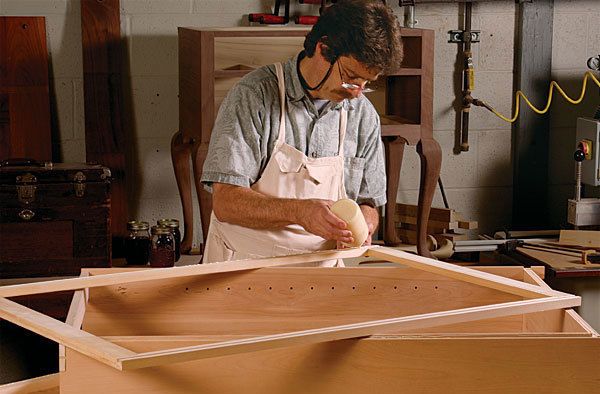Do an About-Face on Cabinets
For better case pieces, start with the face frame, not the box
Synopsis: If your approach to case construction has always been to build the case first and then attach a face frame, Steve Latta would like a moment of your time. His method—learned when he worked for a commercial cabinet builder—is to build the frame first, then fit the case to it. He argues that this approach gives him more flexibility to fix minor mistakes in frame construction, allows him to use strong tongue-and-groove joinery to attach the frame to the case, and ensures that the whole case will go together squarely from the get-go.
This small but classic bookcase is one of my favorite projects. The finished piece is practical and attractive, and for the fledgling woodworker it presents a great introduction to face-frame case construction.
A face frame on a case piece serves a couple of different roles. It improves how the piece looks, letting you hide throughdadoes and change proportions to make the front of the piece appear more substantial and formal. And, if you’re adding doors, it can help keep the opening square and allows a good mounting surface for the hinges.
Like anything else in woodworking, though, there’s more than one way to get the job done. Many furniture makers build the case first and then assemble and attach the face frame. I take a different approach. My early woodshop training was in commercial cabinetry, where the practice was to build the frame first. I do it that way for fine furniture, too, because it offers several advantages.
First, building the frame at the outset gives me the freedom to alter its dimensions slightly to fix any tearout or minor mistakes in its construction. For instance, this frame is decorated with a bead around its inner edge with miters in the corners that can be easy to miscut. I’d lose the flexibility to make an easy fix if I were building the frame to fit an already glued-up case.
Second, I like joining the face frame to the case with strong and positive tongueand-groove joinery as opposed to just gluing the frame in place. Assembling the face frame before building the case makes it easier to locate that joinery. I like that positive connection because the assembled frame helps align the whole assembly during glue-up of the case, simplifying the process and helping to ensure that it goes together squarely.
If you’ve never tried the face-frame-first method, read on. This handsome bookcase project will illustrate all of the advantages.
From Fine Woodworking #217
For the full article, download the PDF below:
Fine Woodworking Recommended Products

Bessey K-Body Parallel-Jaw Clamp

Dubuque Clamp Works Bar Clamps - 4 pack























Log in or create an account to post a comment.
Sign up Log in